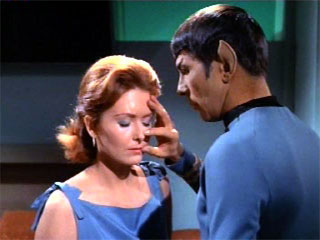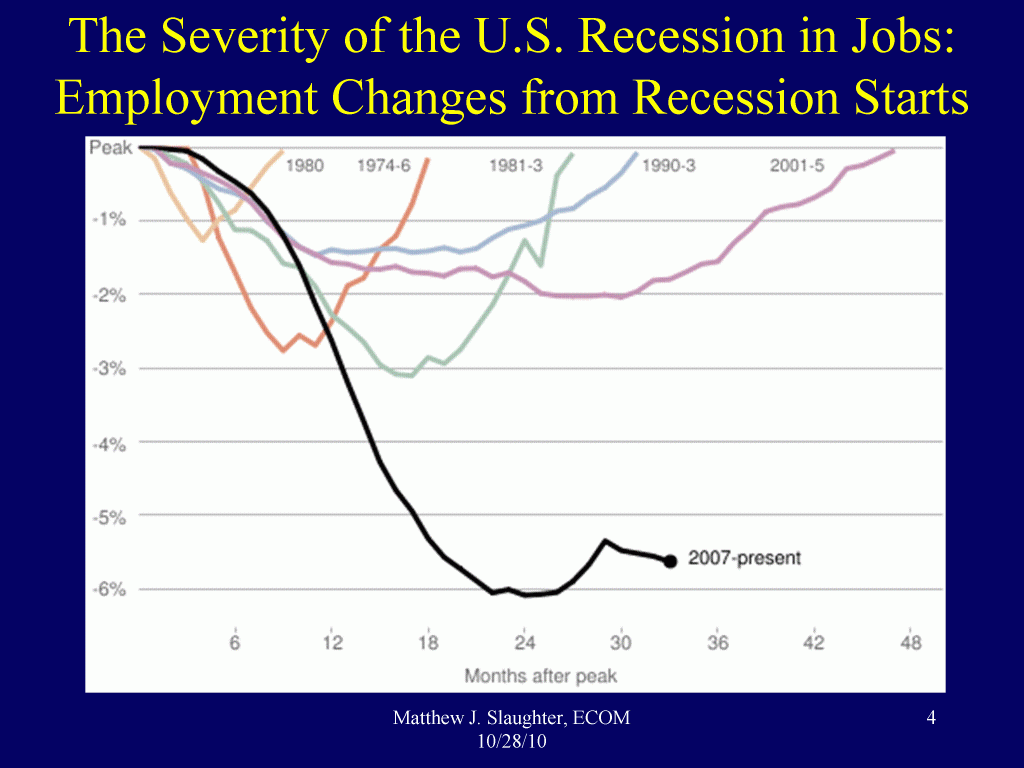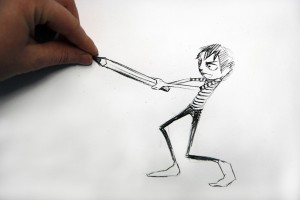Archive for December, 2010
WHY, WHAT, HOW, and new thinking for the engineering community.
 Sometimes we engineers know the answer before the question, sometimes we know the question’s wrong before it’s asked, and sometimes we’re just plain pig-headed. And if we band together, there’s no hope of changing how things are done. None. So, how to bring new thinking to the engineering community? In three words: WHAT, WHY, HOW.
Sometimes we engineers know the answer before the question, sometimes we know the question’s wrong before it’s asked, and sometimes we’re just plain pig-headed. And if we band together, there’s no hope of changing how things are done. None. So, how to bring new thinking to the engineering community? In three words: WHAT, WHY, HOW.
WHY – Don’t start with WHAT. If you do, we’ll shut down. You don’t know the answer, we do. And you should let us tell you. Start with WHY. Give us the context, give us the problem, give us the business fundamentals, give us the WHY. Let us ask questions. Let us probe. Let us understand it from all our angles. Don’t bother moving on. You can’t. We need to kick the tires to make sure we understand WHY. (It does not matter if you understand WHY. We need understand it for ourselves, in our framework, so we can come up with a solution.)
WHAT – For God’s sake don’t ask HOW – it’s too soon. If you do, we’ll shut down. You don’t know the answer, we do. And, if you know what’s good for you, you should let us tell you. It’s WHAT time. Share your WHAT, give us your rationale, explain how your WHAT follows logically from your WHY, then let us ask questions. We’ll probe like hell and deconstruct your WHY-WHAT mapping and come up with our own, one that makes sense to us, one that fits our framework. (Don’t worry, off-line we’ll test the validity of our framework, though we won’t tell you we’re doing it.) We’ll tell you when our WHY-WHAT map holds water.
HOW – Don’t ask us WHEN! Why are you in such a hurry to do it wrong?! And for sanity’s sake, don’t share your HOW. You’re out of your element. You’ve got no right. Your HOW is not welcome here. HOW is our domain – exclusively. ASK US HOW. Listen. Ask us to explain our WHAT-HOW mapping. Let us come up with nothing (that’s best). Let us struggle. Probe on our map, push on it, come up with your own, one that fits your framework. Then, and only then, share how your HOW fits (or doesn’t) with ours. Let us compare our mapping with yours. Let us probe, let us question, let us contrast. (You’ve already succeeded because we no longer see ours versus yours, we simply see multiple HOWs for consideration.) We’ll come up with new HOWs, hybrid HOWs, all sorts of HOWs and give you the strengths and weaknesses of each. And if your HOW is best we’ll recommend it, though we won’t see it as yours because, thankfully, it has become ours. And we’ll move heaven and earth to make it happen. Engineering has new thinking.
Whether it’s my favorite new thinking (product simplification) or any other, the WHY, WHAT, HOW process works. It works because it’s respectful of our logic, of our nature. It fits us.
Though not as powerful a real Vulcan mind meld, WHY, WHAT, HOW is strong enough to carry the day.
I don’t know the question, but the answer is jobs.
 Some sobering facts: (figure and facts from Matt Slaughter)
Some sobering facts: (figure and facts from Matt Slaughter)
- During the Great Recession, US job loss (peak to trough) was 8.4 million payroll jobs were lost (6.1%) and 8.5 million private-sector jobs (7.3%).
- In Sept. 2010 there were 108 million U.S. private-sector payroll jobs, about the same as in March 1999.
- It took 48 months to regain the lost 2.0% of jobs in the 2001 recession. At that rate, the U.S. would again reach 12/07 total payroll jobs around January 2020.
The US has a big problem. And I sure as hell hope we are willing do the hard work and make the hard sacrifices to turn things around.
To me it’s all about jobs. To create jobs, real jobs, the US has got to become a more affordable place to invent, design, and manufacture products. Certainly modified tax policies will help and so will trade agreements to make it easier for smaller companies to export products. But those will take too long. We need something now.
To start, we need affordability through productivity. But not the traditional making stuff productivity, we need inventing and designing productivity.
Here’s the recipe: Invent technology in-country, design and develop desirable products in-country (products that offer real value, products that do something different, products that folks want to buy), make the products in-country, and sell them outside the country. It’s that straightforward.
To me invention/innovation is all about solving technical problems. Solving them more productively creates much needed invention/innovation productivity. The result: more affordable invention/innovation.
To me design productivity is all about reducing product complexity through part count reduction. For the same engineering hours, there are few things to design, fewer things to analyze, fewer to transition to manufacturing. The result: more affordable design.
Though important, we can’t wait for new legislation and trade agreements. To make ourselves more affordable we need to increase productivity of our invention/innovation and design engines while we work on the longer term stuff.
If you’re an engineering leader who wants more about invention/innovation and or design productivity, send me an email at
and use the subject line to let me know which you’re interested in. (Your contact information will remain confidential and won’t be shared with anyone. Ever.)
Together we can turn around the country’s economy.
I see dead people.
 Seeing things as they are takes skill, but doing something about it takes courage. Want an example? Check out movie The Sixth Sense directed by M. Night Shyamalan.
Seeing things as they are takes skill, but doing something about it takes courage. Want an example? Check out movie The Sixth Sense directed by M. Night Shyamalan.
At the start of the film Dr. Malcolm Crowe, esteemed child psychologist, returns home with his wife to find his former patient, Vincent Grey, waiting for him. Grey accuses Crowe of failing him and shoots Crowe in the lower abdomen, then shoots himself.
Cut to a scene three months later where Crowe councils Cole Sear, a troubled, isolated nine year old. Over time, Crowe gains the boy’s trust. The boy ultimately confides in Crow telling him he “Sees dead people that walk around like regular people.” (Talk about seeing things as they are.) Later in the film the boy confides in his mother telling her what he sees. Understandably, his mother does not believe him. But imagine his pain when, after sharing his disturbing reality, his only parent does not support him. (And we get upset when co-workers don’t support our somewhat off-axis realities.) And imagine his courage to move forward.
It takes level 5 courage for him to talk about such a disturbing reality, but Cole Sear is up to the challenge. He so badly wants to change his situation, to shape his future, he does what it takes. Not just talk, but actions. He defines his new future and defines the path to get there. He defines his fears and decides to work through them to create his new future where he is no longer afraid of the dead who seek him out. He changes his go-forward behavior. Instead of hiding, he talks with the dead, understands what they want from him, and helps them. He walks the path.
Ultimately he creates a future that works for him. He convinces his mom that his reality is real; she believes him and supports him and his reality. (That’s what we all want, isn’t it?) His relationships with the dead are non-confrontational and grounded in mutual respect. His stress level is back to mortal levels. His reality is real to people he cares about. But Cole Sear is not done yet.
***** SPOILER ALERT – IF YOU HAVE NOT SEEN THE SIXTH SENSE, READ NO FURTHER ****
In Shyamalan’s classic finish-with-a-twist style, Cole Sear, the scared nine year old boy with his bizarre reality, masterfully convinces his psychologist that his I see dead people reality is real and convinces the psychologist that he’s dead. All along, when the psychologist thought he was helping the boy see things as they are, the boy was helping the psychologist. The little boy who saw dead people convinced the dead psychologist that his seemingly bizarre reality was real.
As Cole demonstrated, seeing things for what they are and doing something about can make a difference in someone’s life.
Define the future, walk the path.
 If you want to shape what will be, define the future.
If you want to shape what will be, define the future.
a
If you want to know how to get there, define the path.
a
If you want to know what’s in the way, define your fears.
a
If you want to overcome your fears, walk the path.
a
If it doesn’t work, repeat.
Our fear is limiting DoD’s Affordability Quest
 The DoD wants to save money, but they can’t do it alone. But can they possibly succeed? Do they have fighting a chance? Can they get it done? Wrong pronouns.
The DoD wants to save money, but they can’t do it alone. But can they possibly succeed? Do they have fighting a chance? Can they get it done? Wrong pronouns.
Can we possibly succeed?
Do we have a fighting chance?
Can we get it done?
In difficult times it’s easy to be critical of others, to make excuses, to look outside. (They, they, they.) In difficult times it’s hard find the level 5 courage to be critical ourselves, to take responsibility, to look inside. (We, we, we.) But we must look inside because that’s where the answer is. We know our work best; we’re the only ones who can reinvent our work; we’re the ones who can save money; we’re responsible.
Changing our actions, our work, is scary, but that’s what the DoD is asking for; we must overcome our fear. But to overcome it we must acknowledge it, see it as it is, and work through it.
Here’s the DoD’s challenge: “Contractors – provide us more affordable systems.” There are two ways we can respond.
The fear-based response (the they response): The DoD won’t accept the changes. In fact, they’ve never liked change. They’ll say no to any changes. They always have.
The seeing things as they are response (the we response): We must try, since not trying is the only way to guarantee failure. Things are different now. Change is acceptable. However, the facts are we don’t know what changes to propose, we don’t know what creates cost, and we don’t know how to design low cost, low complexity systems. We were never taught. We need to develop our capability if we’re to be successful.
The they response: Their MIL specs dictate the design and they won’t budge on them. They’ll say no to any changes. They always have.
The we response: We must try, since not trying is the only way to guarantee failure. Things are different now. Change is acceptable. However, the facts are we don’t know why we designed it that way, we don’t know all that much about the design, we don’t know what creates cost, and we don’t know how to design low cost, low complexity systems. We were never taught. We need to develop our capability if we’re to be successful.
The they response: All they care about is performance. They are driving the complexity. And when push comes to shove, they don’t care about cost. They’ll say no to any changes. They always have.
The we response: We must try, since not trying is the only way to guarantee failure. Things are different now. Change is acceptable. However, the facts are we don’t know what truly controls performance, we don’t know what we can change, we don’t know the sensitivities, we don’t know what creates cost, and we don’t know how to design low cost, low complexity systems. We were never taught. We need to develop our capability if we’re to be successful.
The DoD has courageously told us they want to overcome their fear. Let’s follow their lead and overcome ours. It will be good for everyone.
 Mike Shipulski
Mike Shipulski